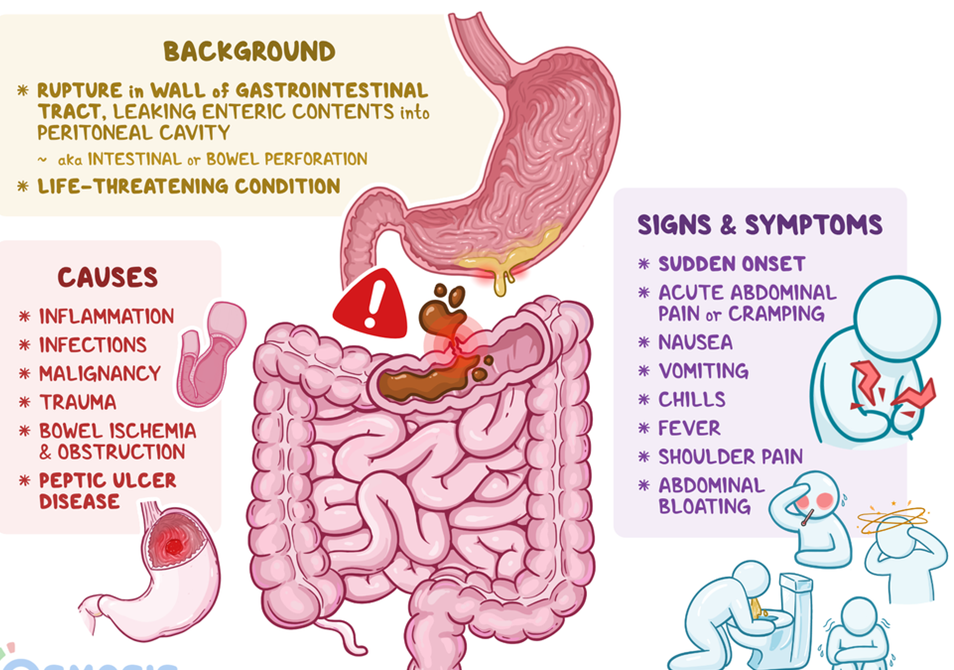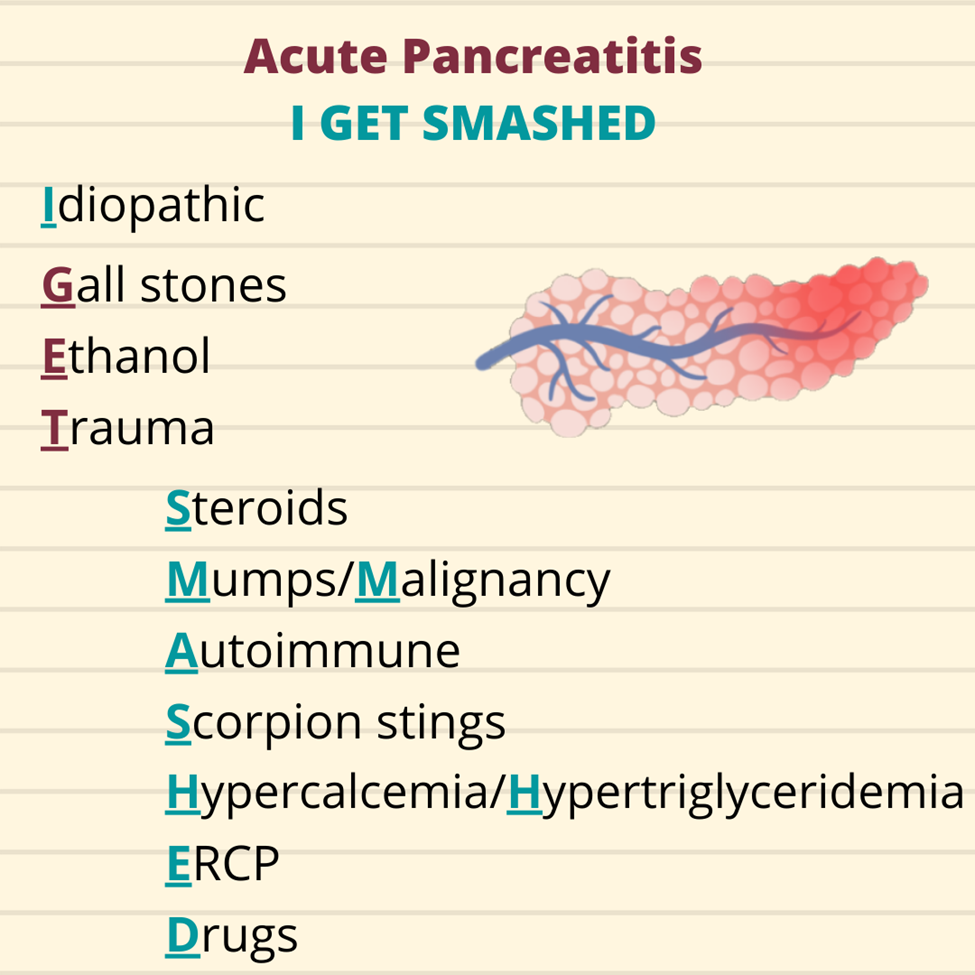A nurse is caring for a client diagnosed with peptic ulcer disease. The nurse should monitor the client for which of the following findings as an indication of gastrointestinal perforation?
Bradycardia
Hyperactive bowel sounds
Increased blood pressure
Sudden abdominal pain
The Correct Answer is D
A. Bradycardia is not typically associated with gastrointestinal perforation. Instead, tachycardia may be observed due to the body's response to a potential emergency or shock.
B. Hyperactive bowel sounds are not typically associated with gastrointestinal perforation. In fact, bowel sounds may decrease or become absent in severe cases of peritonitis or abdominal emergencies.
C. Increased blood pressure is not typically associated with gastrointestinal perforation. Hypotension may be observed due to hypovolemia resulting from fluid leakage into the peritoneal cavity.
D. Sudden abdominal pain is a key clinical manifestation of gastrointestinal perforation. The perforation of the stomach or intestines allows the contents to leak into the abdominal cavity, leading to peritonitis. Sudden and severe abdominal pain is a hallmark symptom, often described as sharp, stabbing, and constant.

Nursing Test Bank
Naxlex Comprehensive Predictor Exams
Related Questions
Correct Answer is D
Explanation
A. COPD (Chronic Obstructive Pulmonary Disease) is not directly associated with acute pancreatitis. The common risk factors for acute pancreatitis include gallstones, alcohol use, and certain medications.
B. Hypolipidemia (low blood lipid levels) is not a typical factor associated with acute pancreatitis. Elevated levels of lipids in the blood (hyperlipidemia) can be a risk factor, but hypolipidemia is not commonly linked to pancreatitis.
C. Diabetes mellitus, while not a direct cause of acute pancreatitis, can be associated with an increased risk. Uncontrolled diabetes may contribute to the development of pancreatitis, but it is not a primary risk factor.
D. Gallstones are a significant risk factor for acute pancreatitis. Gallstones can obstruct the pancreatic duct, leading to inflammation and damage to the pancreas. This obstruction is one of the common causes of acute pancreatitis.

Correct Answer is D
Explanation
A. Bradycardia is not typically associated with gastrointestinal perforation. Instead, tachycardia may be observed due to the body's response to a potential emergency or shock.
B. Hyperactive bowel sounds are not typically associated with gastrointestinal perforation. In fact, bowel sounds may decrease or become absent in severe cases of peritonitis or abdominal emergencies.
C. Increased blood pressure is not typically associated with gastrointestinal perforation. Hypotension may be observed due to hypovolemia resulting from fluid leakage into the peritoneal cavity.
D. Sudden abdominal pain is a key clinical manifestation of gastrointestinal perforation. The perforation of the stomach or intestines allows the contents to leak into the abdominal cavity, leading to peritonitis. Sudden and severe abdominal pain is a hallmark symptom, often described as sharp, stabbing, and constant.

Whether you are a student looking to ace your exams or a practicing nurse seeking to enhance your expertise , our nursing education contents will empower you with the confidence and competence to make a difference in the lives of patients and become a respected leader in the healthcare field.
Visit Naxlex, invest in your future and unlock endless possibilities with our unparalleled nursing education contents today
Report Wrong Answer on the Current Question
Do you disagree with the answer? If yes, what is your expected answer? Explain.
Kindly be descriptive with the issue you are facing.
